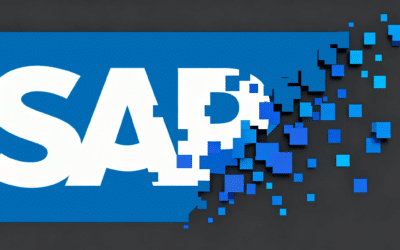Why do we need Release Gates?
by Rohit Gupta
Before starting this topic on the importance of Release Gates, lets first understand – what is a Release Gate?
A Release Gate can be defined as a milestone or health indicator of a release at that very point in time. Milestones are like stones placed beside a road to mark the distance you have covered successfully in your journey. Each Gate defines any criteria which must be met to mark it as completed.
Why Release Gates are required
An IT release consists of various projects which agree to follow the same timelines to go into production together, and work collaboratively for a common goal.
Generally, a release journey consists of phases and gates. Common practice is to have phases such as DEV, SIT, QA & UAT. It is also necessary to make sure that activities such as regression testing and impact assessments etc. are completed as per defined timelines. To allow a smooth journey into production and ensure activities are completed by all projects, we must define gates or milestones.
Activities of projects which are part of the same release, can consequently be aligned to reach these milestones.
Generally, Release Gates:
- provide short term targets for projects to achieve, in order to keep them on the right track
- assist in providing confidence to key stakeholders and business investors that everything is going fine
- help in pro-actively fixing the problems in the journey in advance – which also leads to keeping control of release costs.
Where do we go wrong?
- The perception of tracking the gates for each project being ‘too much work’.
- No active tracking of Release Gates by project and release managers leads to slippages.
- Release managers are sometimes overworked with project management type activities, causing gates to become an overload and get bypassed.
- Lack of documentation of gates criteria can lead to people not following gates
How Enov8 can help you achieve the dream of successful releases
Enov8 are market leaders in Release Management & Environment Management solutions. Our Enterprise Release Management solution, EcoSystem ERM provides release and project managers a common platform for tracking the release & respective projects. This allows for the chance to work in collaboration and avoid the chance of communication gaps. Enov8 provides real time live dashboards, which give stakeholders a holistic view of project/release status, and any risks & issues causing the release to go off the track. This enables them to catch the issues earlier in the release journey, and allows enough time to correct them. Utilising Executive Dashboards also minimises the time that managers spend on reporting, as all reports are automatically generated and are always showing the most updated statuses.
Please click here to learn more about EcoSystem ERM. Schedule a demo to see how Enov8 can help you manage your releases better, and reduce efforts & spending.
Rohit Gupta is a Senior Technical Consultant at Enov8. He has vast experience in Release & Environment Management roles in various domains and has more than 8 years of experience in application development with keen eye for detail on usability and user experience. He has also defined best practices and standardized test environment activities at the enterprise level and helped organizations achieve the highest maturity level in managing test environments.
Relevant Articles
A Detailed Guide to SAP Data Masking
SAP systems handle some of the most sensitive data in the enterprise: financial transactions, HR information, supplier records, customer profiles, operational details, and more. For that reason, copying production data into non-production systems without modification...
Release vs Deployment Management: What’s the Difference?
In the always-an-adventure world of IT service management, there are several key processes that are essential for delivering high-quality services to customers and end-users. Two of the most critical processes are release management and deployment management. These...
7 Tools to Help with Application Rationalization
Application rationalization is the process of identifying which applications an organization should keep, update, consolidate, or retire. Think of it as a financial adviser, but instead of your investment portfolio, it's your application portfolio. Most companies take...
Pairing DevOps with Test Environment Management
For many organizations, DevOps is the best practice for efficiency. However, this model doesn’t come easily as the organization needs to put certain things in place. For example, the firm needs to incorporate the right tools to ensure its delivery pipeline and...
8 DevOps Anti-Patterns You Should Avoid
It’s the normal case with software buzzwords that people focus so much on what something is that they forget what it is not. DevOps is no exception. To truly embrace DevOps and cherish what it is, it’s important to comprehend what it isn’t. A plethora...
An Introductory Guide to Guidewire Data Masking
Testing is an essential part of maintaining a healthy Guidewire environment. But because Guidewire applications handle large volumes of personally identifiable information (PII), simply copying production data for testing or training isn’t an option. This is where...










